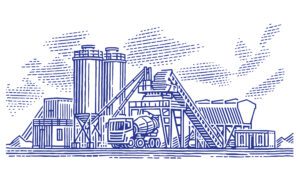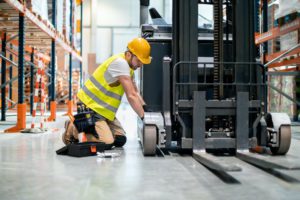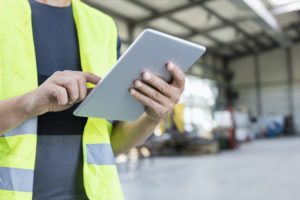Workers Need to be Digitally Connected to Ensure Safety Amid COVID-19
A version of this article was originally published in the Industry Today.
As the industrial world navigates the difficult realities of the COVID-19 impact, so, too, do the people who work in it. So many industrial workers are currently on the frontlines to keep our world running while we battle unprecedented situations. It’s not the robots who are saving us in this crisis; it is people.
In manufacturing, frontline workers don’t have the luxury of working from home. They need to be on the factory floor, working with colleagues to oversee, operate and maintain complex industrial equipment.
Many of our manufacturing customers are experiencing larger-than-normal orders, especially those making “essential” items like food, beverages and personal hygiene products – which means more workers on the production line and more hiring. For example, Georgia-Pacific is ramping up consumer bath tissue production and has facilities that are running 24/7, and, as of this writing, more than 25 percent of its open positions were posted in the last 14 days. L’Oreal has switched some of its plants to making hand sanitizer, including one in Franklin, New Jersey.
According to analyst Peter Bussey at LNS Research, a “potential area of innovation and investment [related to COVID-19] are Connected Worker platforms … such technologies are being increasingly incorporated into [industrial transformation] programs to improve productivity, quality, and safety performance.”
Connected work enables frontline workers to be digitally connected to the people, information, systems and machines they need to improve safety, quality and productivity. How is connected work – and the technology driving it – reshaping the way industrial work gets done, not just in the current crisis but beyond?
Connected Work Turbo-Charges Efficiency
With the global pandemic came a sudden surge in demand for certain products. Mobile-first connected worker technology is giving workers the tools they need to be more efficient as output expectations increase.
Relying on paper-based standard operating procedures (SOPs) stuffed into six-inch binders has never been more inadequate. There is no guarantee of adherence or real-time visibility into compliance, particularly in the current situation where it’s more critical than ever to ensure that the step-by-step execution of work is done right the first time and every time.
Connected worker technology fully digitizes paper-based procedures, ensuring – in real time – that workers are following protocols. They must confirm, with a tap or swipe on a mobile device, exactly where they are in each process. They also must input process data and measurements for validation. If something isn’t right, the procedure can change dynamically to address the unexpected issue, or a team member can be automatically notified.
Additionally, a recent LNS Research report found that, because of COVID-19, 42 percent of companies surveyed changed shift start and stop processes to allow for social distancing. Several of our customers have modified how their teams work on the floor to maintain a safe distance apart.
During shift handovers, connected worker technology can help workers manage the hand-off more efficiently while also protecting themselves. Because work is tracked and captured digitally, the new shift can pull up the connected worker app on their mobile devices to see where the work was left off by the previous shift and what the next steps are, all without necessarily coming into close physical contact with their colleagues.
Connected Work Boosts Smart Decision-Making
Employee health and safety are more critical than ever. With connected worker technology, companies can update their SOPs to include additional employee health and safety precautions like washing hands and health checks for visitors coming onsite.
At the individual worker level, connected worker technology helps them to take control of their safety, like wearing goggles or headgear when executing certain tasks or when working in a potentially volatile area of the plant. When operations are disrupted by unexpected changes in people and processes, safety precautions are often overlooked, and that’s a serious danger.
Meanwhile, at the executive level, technology captures all human activity data as people work, providing insights that can lead to better decisions.
For example, most enterprise resource planning (ERP) systems can show when a specific job begins and ends. Connected worker technology provides an additional level of detail into how the job is being executed, including whether steps were performed out of order, and/or where time is lost. As a plant executive or manager, this information can lead to better worker training and a better understanding of whether it’s the people or the equipment that’s slowing down delivery times.
The human workforce is essential to the industrial world, but, in the midst of the Fourth Industrial Revolution and a global health pandemic, human workers need super powers, too. As manufacturing becomes more advanced with the rise of automation and machine learning, so, too, must workers be digitally empowered so they can continue to drive the industry forward.






